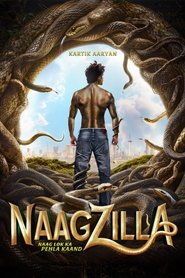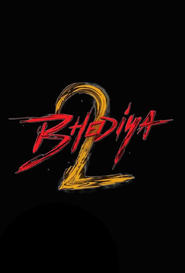
Video Sources 6 Views Report Error

Synopsis
Nate’s supermom wife, Katie, lands a deal on Shark Tank. Subsequently, the lifelong breadwinner of the family becomes a stay-at-home dad and quickly realizes he’s in way over his head.

Introduction
The Breadwinner is a powerful animated drama (2017) directed by Nora Twomey, adapted from the novel by Deborah Ellis. The film is a co-production between Canada, Ireland, and Luxembourg, made by Cartoon Saloon, Aircraft Pictures, and Melusine Productions. It tells the story of an 11-year-old Afghan girl, Parvana, living under Taliban rule in 2001, who must become the “breadwinner” of her family when her father is arrested. The film combines striking animation with emotional storytelling and cultural depth.
Story Overview
Parvana, the young protagonist, lives in Kabul with her family in a time when the Taliban impose harsh restrictions on women: women may not go outside without a male relative, and education for girls is banned. Her father, Nurullah, who once taught and now sells small goods, is unjustly arrested, leaving Parvana’s family vulnerable and without a male to act as provider. To prevent her family from starving, Parvana makes a daring decision: she cuts her hair, dresses as a boy (taking the name “Aatish” in some translations), and goes into the marketplace to earn money by reading and writing letters, and doing small jobs—things forbidden to her as a girl. Along with her friend Shauzia, who is also disguising herself as a boy, Parvana navigates danger, scarcity, and the risk of discovery. Throughout, she draws strength from the stories her father told her, especially a fable she invents about a heroic boy and an evil Elephant King, which becomes a symbolic refuge and source of hope.
Themes and Appeal
Major themes of The Breadwinner include identity & disguise, female courage, family & responsibility, storytelling as survival, and oppression vs hope. The story explores what it means for a young girl to give up part of her identity (her gender, her childhood) in order to protect her family. It also shows the power and danger of silence, of speaking up, of imagination. The film uses its animation not as a light escapade but as a medium capable of depicting harsh realities — daily danger, poverty, fear — balanced with beauty, warmth, and moments of resilience. It appeals to viewers who appreciate stories about women’s struggles, cultural conflict, and how even a child can show huge bravery under impossible circumstances. It’s also educational in showing what life under strict regimes can be like for girls.
Strengths and Weaknesses
Strengths: The Breadwinner is praised for its gorgeous visuals, depth of character, and emotional resonance. The voice performances (especially Saara Chaudry as Parvana) bring authenticity. The film does well in conveying harsh conditions without gratuitous violence, using muted color palettes, realistic sound, and careful pacing. The storytelling using fantasy (Parvana’s stories) adds layers — both escape and metaphor. Critics often point out that it avoids condescension toward its audience.
Weaknesses / Challenges: Some viewers feel certain plot developments are predictable, or the emotional tone becomes heavy, especially for younger audiences. There are moments where the political situation or the scope of difficulties might be simplified to make the narrative clearer, which some might see as reducing complexity. Also, the disguised life theme has been used in similar stories, so there’s a risk of overlap with others — but The Breadwinner distinguishes itself through its setting, visual style, and depth of character.
FAQs about The Breadwinner
Q1: Who made The Breadwinner, and where is it set?
A1: It was directed by Nora Twomey, based on the novel by Deborah Ellis. It’s set in Kabul, Afghanistan, in 2001 under Taliban rule.
Q2: What is the main conflict / challenge for Parvana?
A2: When her father is arrested, Parvana must find a way to support her family in a society that forbids girls from leaving home without a male relative. She disguises herself as a boy to work and to gain freedom she otherwise wouldn’t have, with all the risk that brings.
Q3: What role do stories play in the film?
A3: Parvana’s father frequently tells tales, and Parvana herself creates fantasies (like the Elephant King) that help her—and her family—cope with fear, loss, and uncertainty. These stories are metaphors for resistance and hope.
Q4: Who are the key characters besides Parvana?
A4: Shauzia, Parvana’s friend who also disguises herself as a boy; Parvana’s mother Fattema; older sister Soraya; baby brother Zaki; and Razaq, who befriends her.
Q5: Is this film suitable for children?
A5: While animated and visually beautiful, it deals with serious themes — oppression, violence, loss, danger. It’s more suitable for older children, teens, and adults. Younger children may find some content disturbing.
Q6: What recognition has the film received?
A6: The Breadwinner was nominated for an Academy Award for Best Animated Feature. It has won awards (e.g. at the Annie Awards) and has been praised by critics for its storytelling, animation, and impact.
Conclusion
The Breadwinner stands out as an animated film that refuses to simplify the complexity of life under oppression, especially for girls. Parvana’s journey is heartbreaking and inspiring — a young girl who steps up when everything seems stacked against her, finding strength in stories, family, and her own will. While it’s not an easy movie, its honesty, artistry, and emotional weight make it deeply memorable. It shows that even in the darkest times, courage and affection can shine through.
Original title The Breadwinner
Director
Director






















